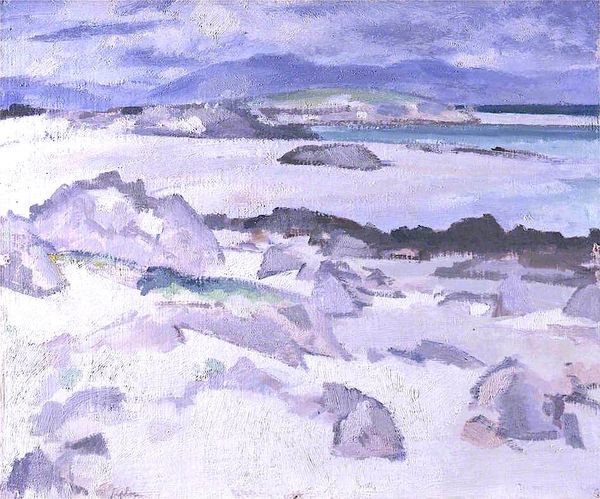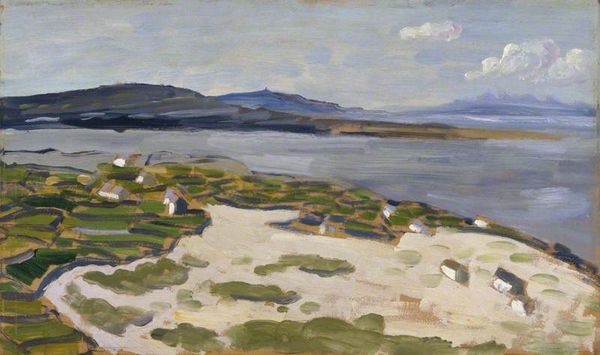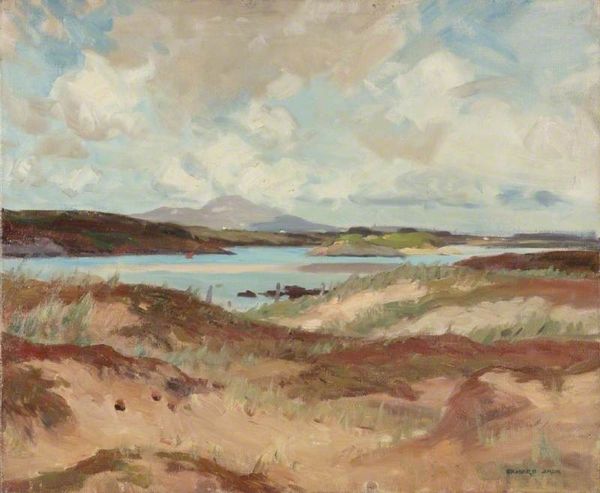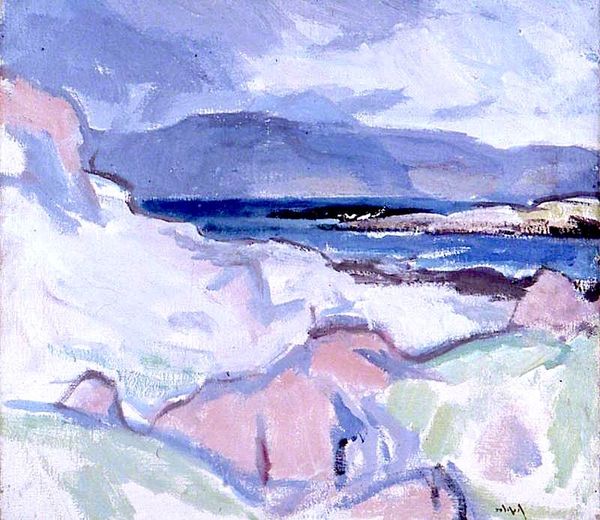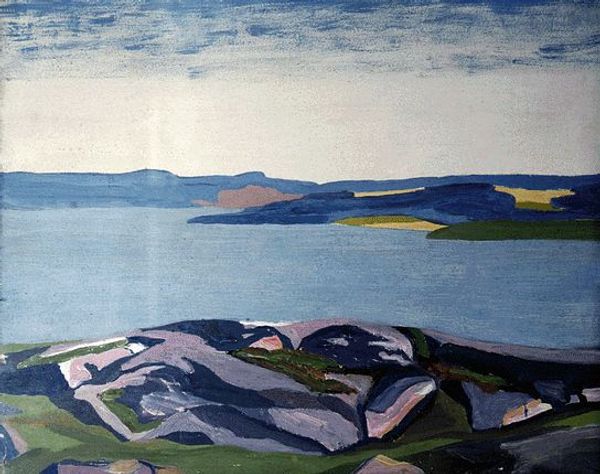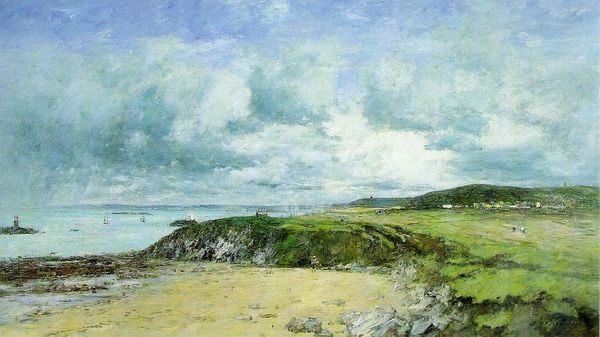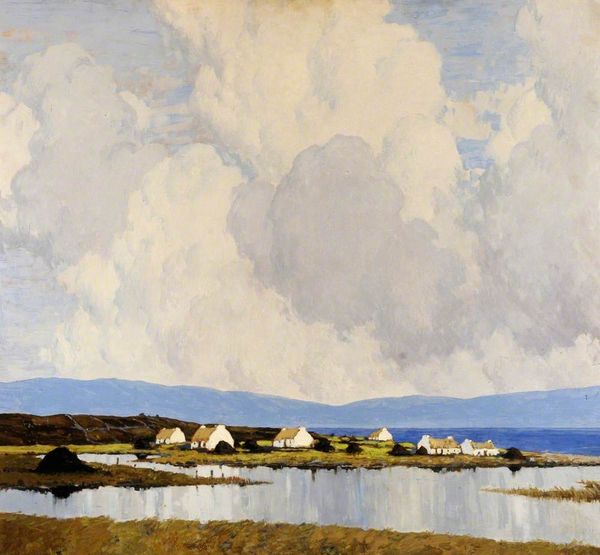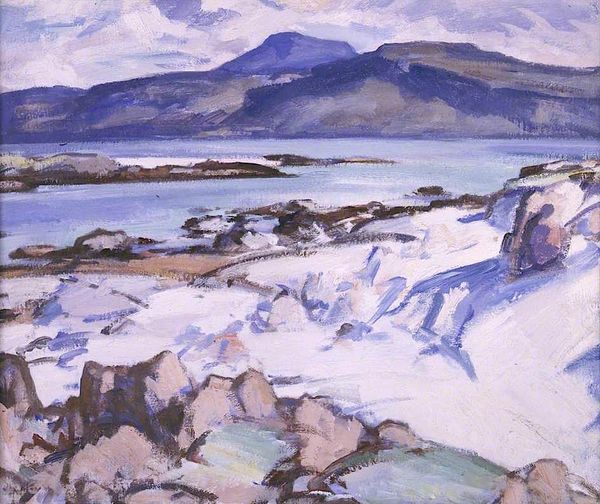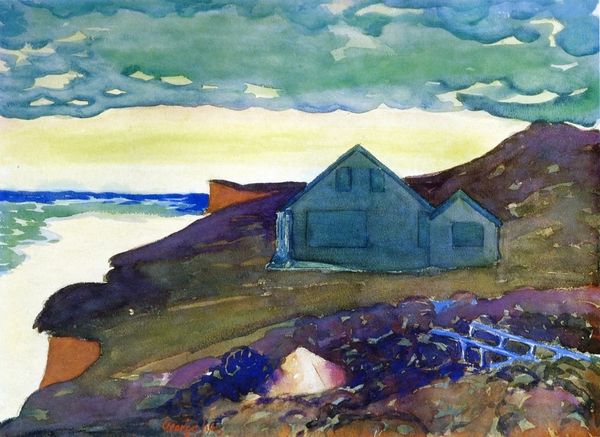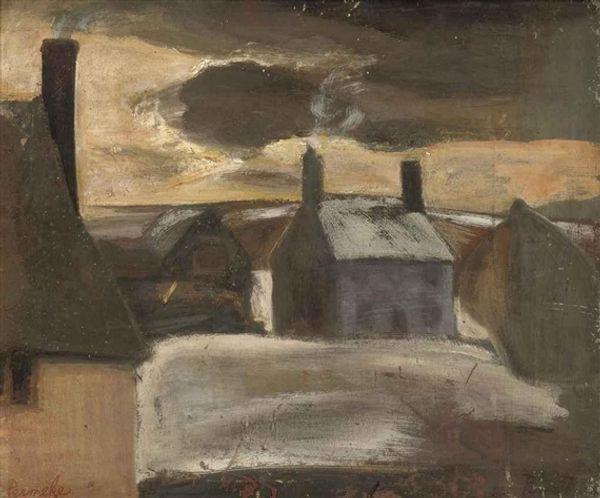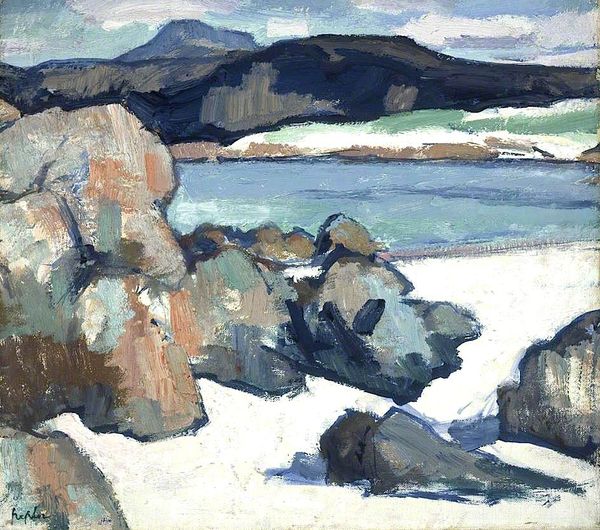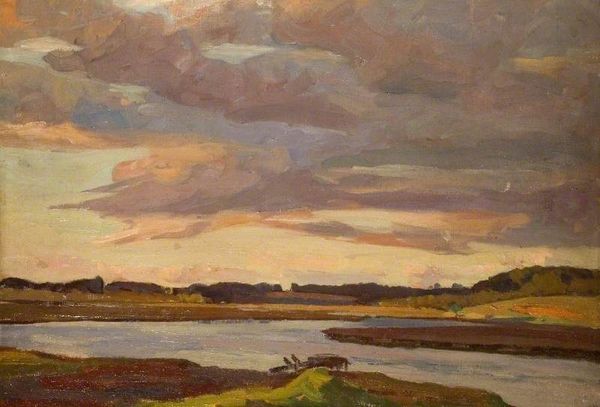
painting, oil-paint
#
painting
#
oil-paint
#
landscape
#
oil painting
#
realism
Copyright: Public domain US
Curator: Let's consider Paul Henry’s “Keel, Achill,” completed around 1919. It's an oil painting capturing the Irish landscape. What are your immediate thoughts? Editor: A somber yet tranquil scene. The muted color palette creates a subdued atmosphere; everything seems toned down, as if reflecting a collective weight. The village itself looks hunched down against the land. Curator: That subdued quality is compelling, especially when viewed through the lens of early 20th-century Ireland. "Keel, Achill" depicts a community deeply rooted in its landscape yet burdened by its relationship to the British state. Notice the limited palette and heavy atmosphere mirroring the social climate. Editor: True, the structural composition is striking, too. The buildings huddle low, arranged geometrically against the curvilinear forms of the beach and the hills beyond, all united with those consistent brushstrokes. This formal contrast enhances the thematic tension. It's as if order is being imposed upon nature and culture. Curator: It can be also said the landscape is gendered as well. Early 20th-century representations of women and Ireland, a shared identity, are deeply intertwined. Think about the trope of Ireland being symbolized as a female figure, subjected to various oppressions. It could be argued that this artwork reflects this dynamic. The land, much like women's bodies at the time, carries this weighty historical and social significance. Editor: I follow your intersectional logic, but let’s examine that sea foam again. The dynamism, the texture – isn't Henry also concerned with the intrinsic beauty of natural forms? The brushstrokes create a feeling of constant flux, challenging any singular interpretation. Curator: Absolutely, it is both/and. Henry manages to imbue "Keel, Achill" with historical and social weight. How art acts as both a mirror to, and a space for reflecting upon social realities. Editor: Well said. I think this work really shows that how both formal and historical components blend into our unique experiences with a piece.
Comments
No comments
Be the first to comment and join the conversation on the ultimate creative platform.

